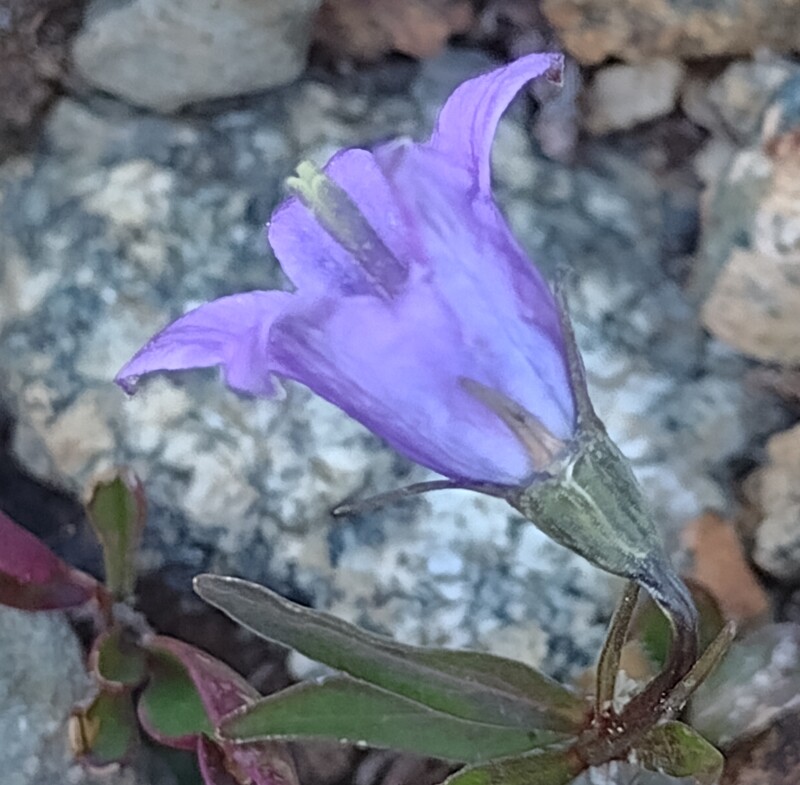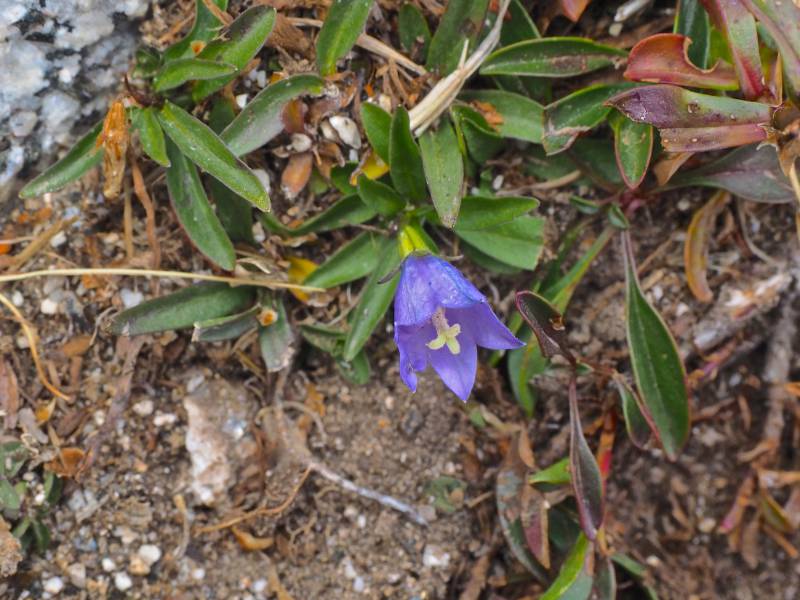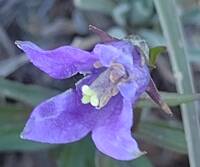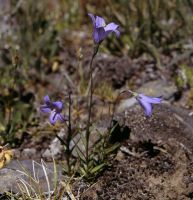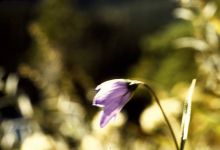Distribution: Occurring in the Cascades Range and Olympic Mountains in Washington, where disjunct; central Idaho and adjacent Montana south in Rocky Mountains to Arizona and New Mexico.
Habitat: In subalpine and alpine areas.
Flowers: July-August
Origin: Native
Growth Duration: Perennial
Conservation Status: Not of concern
Pollination: Generalist
Perennial herbs from branching, slender rhizomes, the stems glabrous, up to 2.5 dm. tall.
Basal leaves entire, elliptic to oblanceolate, 7-30 mm. long and 3-12 mm. broad, with marginal hairs toward the base; cauline leaves alternate, well-developed, narrower, 2-5 cm. long and 2-5 mm. broad.
Flowers usually solitary, terminal; calyx lobes 5, 2-6 mm. long; corolla bell-shaped, blue, 9-15 mm. long, the 5 lobes broad, equal to or much shorter than the tube; stamens 5, free from the corolla, the filaments short; style included, stigma 3-lobed; ovary inferior.
Capsule 3-celled, broadest above the middle, erect, 7-11 mm. long and less than half as wide.
Publication: Syn. Fl. N. Amer., ed. 2. 2(1): 395. 1886.
-
var. idahoensis – Parry's harebell
 Occurring in the Cascades Range and Olympic Mountains in Washington, where disjunct; central Idaho and adjacent Montana south in Rocky Mountains to Arizona and New Mexico.
Occurring in the Cascades Range and Olympic Mountains in Washington, where disjunct; central Idaho and adjacent Montana south in Rocky Mountains to Arizona and New Mexico.
PNW Herbaria: Specimen records of Campanula parryi in the Consortium of Pacific Northwest Herbaria database.
WA Flora Checklist: Campanula parryi checklist entry.
OregonFlora: Campanula parryi information.
E-Flora BC: Campanula parryi atlas page.
CalPhotos: Campanula parryi photos.
USDA Plants: Campanula parryi information.

